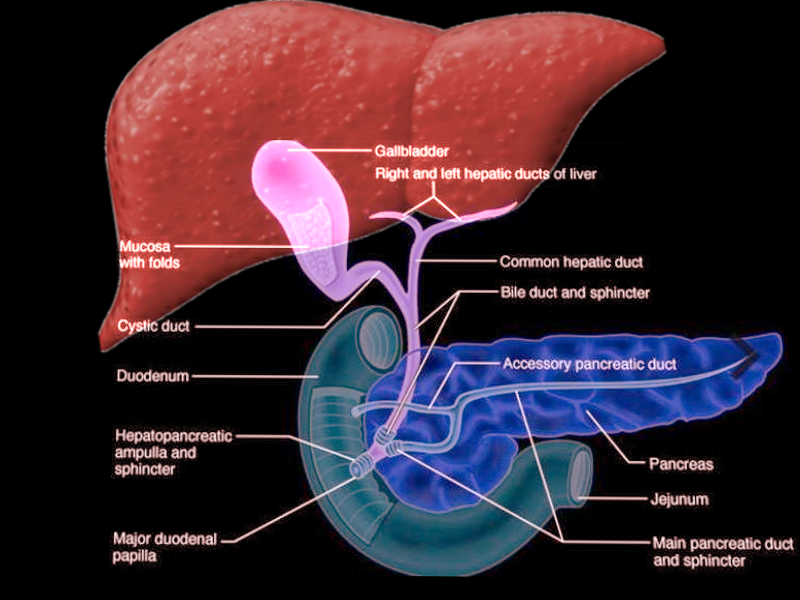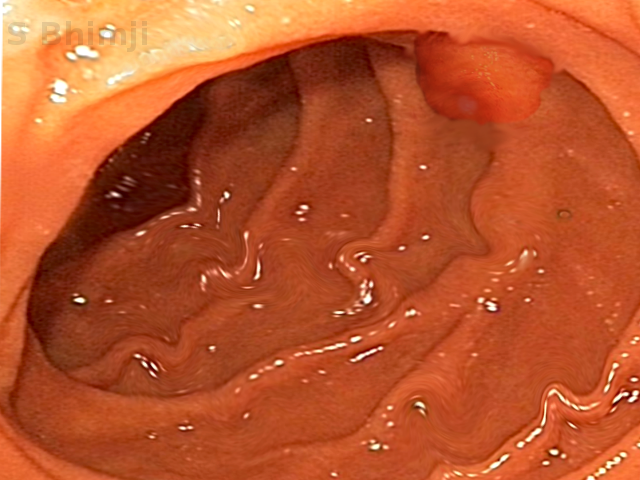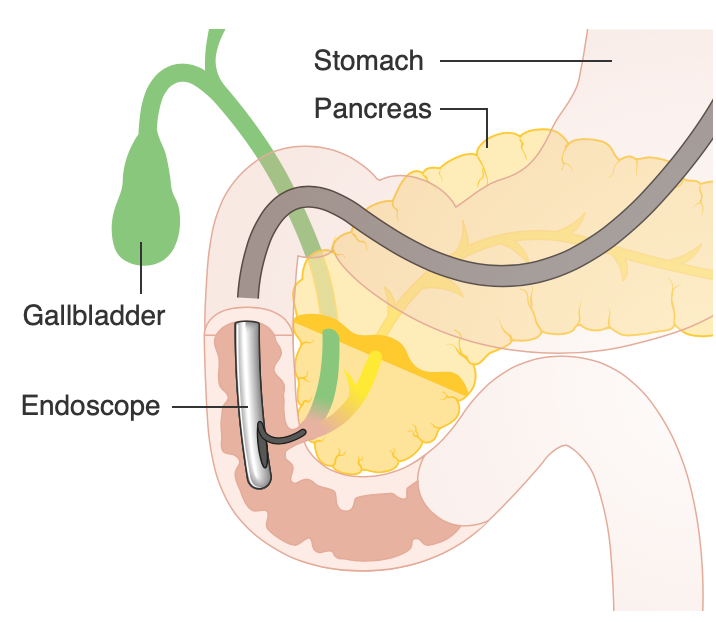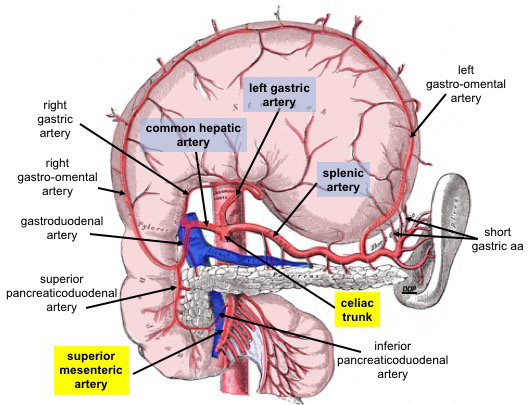[1]
Loukas M, Spentzouris G, Tubbs RS, Kapos T, Curry B. Ruggero Ferdinando Antonio Guiseppe Vincenzo Oddi. World journal of surgery. 2007 Nov:31(11):2260-5
[PubMed PMID: 17902018]
[2]
Leung WD, Sherman S. Endoscopic approach to the patient with motility disorders of the bile duct and sphincter of Oddi. Gastrointestinal endoscopy clinics of North America. 2013 Apr:23(2):405-34. doi: 10.1016/j.giec.2012.12.006. Epub
[PubMed PMID: 23540967]
[3]
Afghani E, Lo SK, Covington PS, Cash BD, Pandol SJ. Sphincter of Oddi Function and Risk Factors for Dysfunction. Frontiers in nutrition. 2017:4():1. doi: 10.3389/fnut.2017.00001. Epub 2017 Jan 30
[PubMed PMID: 28194398]
[4]
Gokin AP, Hillsley K, Mawe GM. Cholecystokinin depolarizes guinea pig sphincter of Oddi neurons by activating CCK-A receptors. The American journal of physiology. 1997 Jun:272(6 Pt 1):G1365-71
[PubMed PMID: 9227471]
[5]
Wyatt AP. The relationship of the sphincter of Oddi to the stomach, duodenum and gall-bladder. The Journal of physiology. 1967 Nov:193(2):225-43
[PubMed PMID: 6065875]
[6]
Chen P, Hu B, Tan Q, Liu L, Li D, Jiang C, Wu H, Li J, Tang C. Role of neurocrine somatostatin on sphincter of Oddi contractility and intestinal ischemia reperfusion-induced acute pancreatitis in macaques. Neurogastroenterology and motility : the official journal of the European Gastrointestinal Motility Society. 2010 Aug:22(8):935-41, e240. doi: 10.1111/j.1365-2982.2010.01506.x. Epub 2010 May 24
[PubMed PMID: 20497509]
[7]
Ando H. Embryology of the biliary tract. Digestive surgery. 2010:27(2):87-9. doi: 10.1159/000286463. Epub 2010 Jun 10
[PubMed PMID: 20551648]
[8]
Furukawa H, Iwata R, Moriyama N, Kosuge T. Blood supply to the pancreatic head, bile duct, and duodenum: evaluation by computed tomography during arteriography. Archives of surgery (Chicago, Ill. : 1960). 1999 Oct:134(10):1086-90
[PubMed PMID: 10522852]
[10]
Wells DG, Talmage EK, Mawe GM. Immunohistochemical identification of neurons in ganglia of the guinea pig sphincter of Oddi. The Journal of comparative neurology. 1995 Jan 30:352(1):106-16
[PubMed PMID: 7536219]
Level 2 (mid-level) evidence
[11]
Yi SQ, Ren K, Kinoshita M, Takano N, Itoh M, Ozaki N. Innervation of Extrahepatic Biliary Tract, With Special Reference to the Direct Bidirectional Neural Connections of the Gall Bladder, Sphincter of Oddi and Duodenum in Suncus murinus, in Whole-Mount Immunohistochemical Study. Anatomia, histologia, embryologia. 2016 Jun:45(3):184-8. doi: 10.1111/ahe.12186. Epub 2015 Jul 14
[PubMed PMID: 26179953]
[12]
Talmage EK, Hillsley K, Kennedy AL, Mawe GM. Identification of the cholinergic neurons in guinea-pig sphincter of Oddi ganglia. Journal of the autonomic nervous system. 1997 May 12:64(1):12-8
[PubMed PMID: 9188080]
[13]
Dusunceli Atman E, Erden A, Ustuner E, Uzun C, Bektas M. MRI Findings of Intrinsic and Extrinsic Duodenal Abnormalities and Variations. Korean journal of radiology. 2015 Nov-Dec:16(6):1240-52. doi: 10.3348/kjr.2015.16.6.1240. Epub 2015 Oct 26
[PubMed PMID: 26576112]
[14]
Cavallini G, Bovo P, Vaona B, Di Francesco V, Frulloni L, Rigo L, Brunori MP, Andreaus MC, Tebaldi M, Sgarbi D, Angelini G, Talamini G, Procacci C, Pederzoli P, Filippini M. Chronic obstructive pancreatitis in humans is a lithiasic disease. Pancreas. 1996 Jul:13(1):66-70
[PubMed PMID: 8783336]
[15]
Hyun JJ, Kozarek RA. Sphincter of Oddi dysfunction: sphincter of Oddi dysfunction or discordance? What is the state of the art in 2018? Current opinion in gastroenterology. 2018 Sep:34(5):282-287. doi: 10.1097/MOG.0000000000000455. Epub
[PubMed PMID: 29916850]
Level 3 (low-level) evidence
[16]
Drossman DA, Li Z, Andruzzi E, Temple RD, Talley NJ, Thompson WG, Whitehead WE, Janssens J, Funch-Jensen P, Corazziari E. U.S. householder survey of functional gastrointestinal disorders. Prevalence, sociodemography, and health impact. Digestive diseases and sciences. 1993 Sep:38(9):1569-80
[PubMed PMID: 8359066]
Level 3 (low-level) evidence
[17]
Bistritz L,Bain VG, Sphincter of Oddi dysfunction: managing the patient with chronic biliary pain. World journal of gastroenterology. 2006 Jun 28;
[PubMed PMID: 16804961]
[18]
Small AJ, Kozarek RA. Sphincter of Oddi Dysfunction. Gastrointestinal endoscopy clinics of North America. 2015 Oct:25(4):749-63. doi: 10.1016/j.giec.2015.06.009. Epub 2015 Aug 5
[PubMed PMID: 26431602]
[19]
Sugawa C, Park DH, Lucas CE, Higuchi D, Ukawa K. Endoscopic sphincterotomy for stenosis of the sphincter of Oddi. Surgical endoscopy. 2001 Sep:15(9):1004-7
[PubMed PMID: 11605112]
[20]
Allescher HD. [Sphincter of Oddi dyskinesia]. Der Internist. 2015 Jun:56(6):638, 640-4, 646-7. doi: 10.1007/s00108-014-3605-8. Epub
[PubMed PMID: 25995163]
[21]
Cheon YK, How to interpret a functional or motility test - sphincter of oddi manometry. Journal of neurogastroenterology and motility. 2012 Apr
[PubMed PMID: 22523732]
[22]
Geenen JE, Hogan WJ, Dodds WJ, Toouli J, Venu RP. The efficacy of endoscopic sphincterotomy after cholecystectomy in patients with sphincter-of-Oddi dysfunction. The New England journal of medicine. 1989 Jan 12:320(2):82-7
[PubMed PMID: 2643038]
[23]
Cotton PB, Durkalski V, Romagnuolo J, Pauls Q, Fogel E, Tarnasky P, Aliperti G, Freeman M, Kozarek R, Jamidar P, Wilcox M, Serrano J, Brawman-Mintzer O, Elta G, Mauldin P, Thornhill A, Hawes R, Wood-Williams A, Orrell K, Drossman D, Robuck P. Effect of endoscopic sphincterotomy for suspected sphincter of Oddi dysfunction on pain-related disability following cholecystectomy: the EPISOD randomized clinical trial. JAMA. 2014 May:311(20):2101-9. doi: 10.1001/jama.2014.5220. Epub
[PubMed PMID: 24867013]
Level 1 (high-level) evidence
[24]
Wilcox CM. Sphincter of Oddi dysfunction Type III: New studies suggest new approaches are needed. World journal of gastroenterology. 2015 May 21:21(19):5755-61. doi: 10.3748/wjg.v21.i19.5755. Epub
[PubMed PMID: 26019439]
[25]
Vitton V, Ezzedine S, Gonzalez JM, Gasmi M, Grimaud JC, Barthet M. Medical treatment for sphincter of oddi dysfunction: can it replace endoscopic sphincterotomy? World journal of gastroenterology. 2012 Apr 14:18(14):1610-5. doi: 10.3748/wjg.v18.i14.1610. Epub
[PubMed PMID: 22529689]
[26]
Kalaitzakis E, Ambrose T, Phillips-Hughes J, Collier J, Chapman RW. Management of patients with biliary sphincter of Oddi disorder without sphincter of Oddi manometry. BMC gastroenterology. 2010 Oct 22:10():124. doi: 10.1186/1471-230X-10-124. Epub 2010 Oct 22
[PubMed PMID: 20969779]
[27]
Murray W, Kong S. Botulinum toxin may predict the outcome of endoscopic sphincterotomy in episodic functional post-cholecystectomy biliary pain. Scandinavian journal of gastroenterology. 2010 May:45(5):623-7. doi: 10.3109/00365521003615647. Epub
[PubMed PMID: 20156033]
[28]
Wehrmann T,Schmitt TH,Arndt A,Lembcke B,Caspary WF,Seifert H, Endoscopic injection of botulinum toxin in patients with recurrent acute pancreatitis due to pancreatic sphincter of Oddi dysfunction. Alimentary pharmacology & therapeutics. 2000 Nov
[PubMed PMID: 11069318]
[29]
Jagannath S, Kalloo AN. Efficacy of biliary scintigraphy in suspected sphincter of Oddi dysfunction. Current gastroenterology reports. 2001 Apr:3(2):160-5
[PubMed PMID: 11276385]
[30]
Craig AG, Peter D, Saccone GT, Ziesing P, Wycherley A, Toouli J. Scintigraphy versus manometry in patients with suspected biliary sphincter of Oddi dysfunction. Gut. 2003 Mar:52(3):352-7
[PubMed PMID: 12584215]
[31]
Rosenblatt ML, Catalano MF, Alcocer E, Geenen JE. Comparison of sphincter of Oddi manometry, fatty meal sonography, and hepatobiliary scintigraphy in the diagnosis of sphincter of Oddi dysfunction. Gastrointestinal endoscopy. 2001 Dec:54(6):697-704
[PubMed PMID: 11726844]




